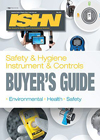In the United Kingdom, around 2.4 million work days were lost in 2009 and 2010 due to lower limb disorders. A 2014 survey of 1,000 American adults from the American Podiatric Medical Association found that half of respondents lived with some form of foot pain. Much of this pain and discomfort could be prevented by wearing the right shoe for the job and following a daily foot care routine.
Flat sole shoes may seem like the obvious choice if you work on your feet, but these shoes aren’t recommended for prolonged standing. According to Canada’s Occupational Health Clinics for Ontario Workers Inc., your heel should be elevated by at least ¼-inch and should be less than 2 inches.
Work shoes should also provide good arch support. This helps reduce weakness and soreness in the legs and feet. If your shoes don’t provide enough support, you can purchase arch support insoles from a drugstore or an athletic store.
Many people wear shoes that are too small. This cuts off circulation to your feet, increases your chances of blisters, and makes walking or standing uncomfortable. Getting your feet properly sized can help you make better decisions when it comes to purchasing shoes and reducing discomfort.
Stop every hour or so to stretch, relax, and lengthen tightened muscles.
Calf raises help pump blood out of the foot (where it has pooled while you were standing) and back to the body.
- Stand tall on the edge of a step or platform, with your abdominal muscles pulled in.
- Secure the balls of your feet firmly on the step with your heels hanging over the edge.
- Raise your heels a few inches above the step as you stand on your tiptoes, and hold for a second.
- Lower your heels back to even with the platform.
- Repeat 10 times.
Another good stretch is the runner’s stretch.
- Face a wall and place your hands against it.
- Extend one leg behind your body.
- Push your heel to the floor as far as it will go.
- Hold for a moment to feel the stretch and then switch sides.
- Repeat three times on each leg
Immersing the foot — as long as you don’t have vascular problems — in a bucket with water and ice for 20 minutes combats swelling and inflammation that prolonged standing creates in the foot. Every step you take or minute you stand, you are creating micro-damage that the body has to heal. Using ice helps the body heal faster.”
Roll your foot from heel to toe over a tennis ball or baseball. The gentle massage on your feet and arches will stretch tight foot muscles and help your feet recover more quickly.
Propping your feet above the rest of your body will help decrease the day’s swelling. You can place them against a wall or on a stack of pillows.
Make an appointment to see your doctor if the pain continues, gets worse, or you begin to notice increasing symptoms such as numbness, stinging, or tingling in your feet and toes. Pain is a sign that something is wrong. Do not walk through pain.
Source: www.healthline.com



